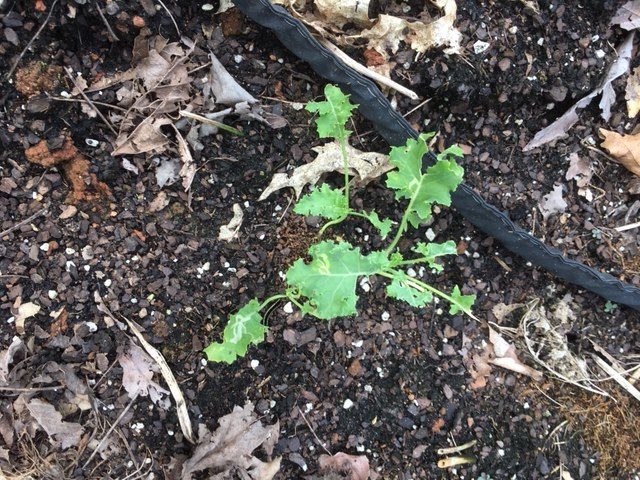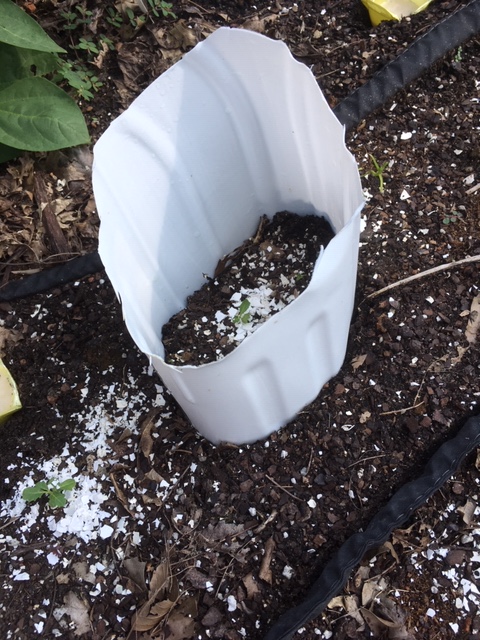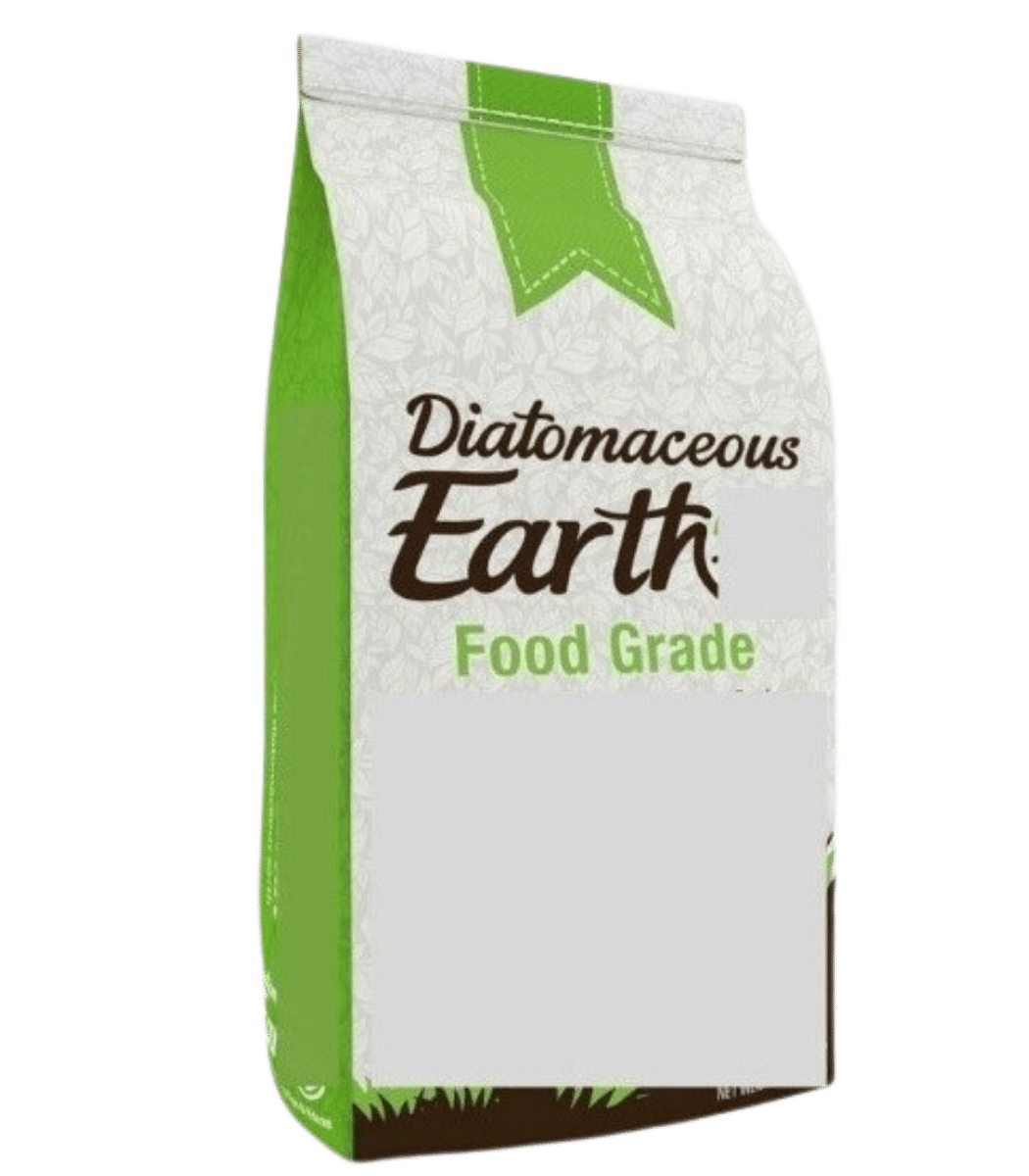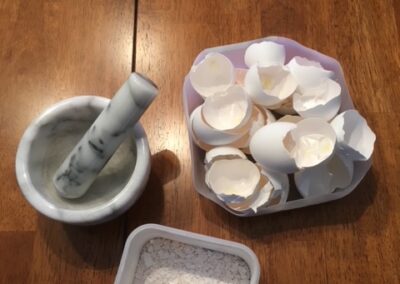
Slug Traps
Mulch does many good things, from improving soil, retaining moisture, and attracting beneficial insects.
But…there is a downside.
Slimy,
little slime ball,
slugs!
There are some (free) no-extra-cost-to-you slug traps and some inexpensive ones. I’ve tried them all!
My favorite improves the soil while at the same time working to keep slugs and snails at bay. I’ll tell you which ones worked and which ones I liked best!

Prevention and Control
Barriers
Using a barrier can make it more challenging for the slugs to get to the plant. Take a clean milk jug and carefully cut the bottom off. Then cage the plant with the milk jug. You can cover the opening with an insect barrier or fine mesh curtain. Secure it with a rubber band.
Since my milk containers aren’t opaque enough, I cut the tops off so the plants can get enough sunlight.
I didn’t notice any difference with this method. It also becomes problematic as the plants grew. The barrier starts to restrict the plant’s growth. The slugs can also climb up the sides of the barrier and with mine being open, it didn’t work the greatest for me. I didn’t care for this method.

Diatomaceous Earth
For diatomaceous earth safety and what it is, see Zucchini Pest Prevention. Diatomaceous earth works very similarly to eggshells. Place a ring around the plant and make sure there are no gaps.
Rain will wash this away, so you may need to apply several times. This works pretty well! Diatomaceous earth is very sharp. To the slug or other soft-body insects, it’s like crawling over glass shards. These ‘shards’ will cut the bodies of the insects, which will cause them to dry out and die.
Be aware it will kill beneficial as well as pest insects. For this reason, I will only use it as a barrier. This greatly limits how many beneficials come in contact with it. If you choose to use this method, just make sure it is food grade.

Eggshells
Ground eggshells are sharp, slugs and snails are soft-bodied and don’t like going over sharp things. It will cut them and they will dry out and die. Eggshells worked really well around my pepper plants (or basil, kale, etc.) when the slimy buggers tried to unleash their destruction.
Save your eggshells. Rinse them and let them dry well before grinding. You can use a morter and pestel or place them in a bag and crush them with a rolling pin. You want a grind that still has some good-sized pieces–not too smooth.
Place a ring of ground eggshells around the plant. Making sure there are no gaps. This is a good option during rainy periods as eggshells break down slowly and usually won’t get washed away like diatomaceous earth.
Ideally, you would do this at the time of transplant for prevention. I didn’t and now I’m trying to keep further damage from happening so the plants can recover.
My favorite method!
Using eggshells is my favorite way to take care of slugs and snails. There is no need to buy a trap. I never throw my eggshells away. They are a ‘free’ source of calcium. This is a micronutrient that most plants need to be healthy. The shells will break down over time, adding calcium to the soil. This will help prevent blossom end rot in plants like tomatoes.
I also liked it as I didn’t need to keep replacing it after rain storms or even morning dew as you do with diatomaceous earth. I only had to fill in gaps every once in a while.
You can make your own, No Additional Cost to you, slug bait and trap using common kitchen pantry items!
Cheap Trap:
For Trap:
Use your egg cartons and cut the cups out to create individual cups. Bury in the garden just enough to make the trap stable. You can also use lids, with a good lip, from bottles.
For Bait:
Equal parts flour, sugar, and water. You can store up to a week in the fridge. Fill traps each evening. Slugs feed at night.
My experience with this didn’t go so well. If there were any slugs in the bait, I’ll never know. It attracted every ant in the garden and I ended up feeding the ants. So, I removed the bait. I’m going to stick to the eggshells as this works!
You can also buy slug bait…it’s called beer.
For Trap:
Use anything that will hold a shallow amount of liquid, like lids, that have a good lip. Or use your egg cartons and cut the cups out to create individual cups. Bury in the garden just enough to make the trap stable.
For Bait:
Any beer will do. Fill traps each evening. Slugs feed at night.
I chose not to try this one based on my experience with the cheap trap. I didn’t want to feed the ants any more than I already had. Plus, why buy something when ‘free’ eggshells were working beautifully?
You May Also Like:
Companion Planting: How to use flowers to help control pests.
Trap cropping: How to keep pests out of your main crop.


